Students will study movement in Keith Haring's artwork then create life-size drawings depicting playful moving figures. Recommended for 3rd Graders.
Line: the flat path of a dot through space used by artists to lead the viewer’s eye; a long narrow mark or stroke made on or in a surface. Repetition of lines creates texture, pattern and gradations of value.
Shape: a two-dimensional (flat) area enclosed by a line.
Contrast: the arrangement of opposite elements next to each other so as to create visual interest, excitement, and drama. In this lesson, it’s contrasting colors: opposite each other on the color wheel.
Movement: Implied or real movement in art, made by use of the art elements (in this lesson, line and repeated shapes) to draw a viewer’s eye from one point to another in an artwork.
Composition: the use of the principles of design to arrange art elements to create interesting artwork. The artist makes decisions about the composition to express a particular idea. In this lesson, the students use the arrangement of their bodies to suggest movement/action.
Semiotics: the language of signs and symbols.
Keith Haring was a prolific American Pop artist and muralist in the 1980s. From an early age, his family said all he ever did was draw. He was influenced and inspired by Dr. Seuss, Walt Disney and his father who also drew cartoons for a living.
In 1980, Keith noticed unused advertising panels in the New York City subway systems. He was inspired by the unused space and bought a box of white chalk. Haring knew, from his background in graphic design and semiotics, that whatever he drew would have to be able to be understood by the quickly passing subway passengers. He used bold lines, easily recognizable designs, and simple stories to convey a message on each panel. Much of his work spoke about social issues. The subway passengers took notice and soon Haring became a celebrity. Haring now had international recognition.
Haring believed that art belonged to the people and everyone deserved art. Often, if his art was in a museum, Keith insisted on having a piece outside of the museum, so people could enjoy his art without paying to see it. Much of his career was spent working with children and charities.
Haring was diagnosed with AIDS in 1988. He established the Keith Haring Foundation which exists today providing funding and imagery to AIDS organizations and children’s programs. Haring donated his time towards his charitable work and loved working with children. Haring passed away at the age of 31 on February 16, 1990. Although his life was short, he had a truly prolific career.

Become familiar with Keith Haring by visiting haringkids.com and Haring.com. Have examples of Haring’s work available to show students.
Tear off butcher paper for each student, paying attention to the height of your students.
Prepare paint palettes with complimentary colors. Pass out black by request during the lesson.
Students will:
While discussing his biography, show works by Keith Haring by visiting www.haringkids.com and www.Haring.com. Specifically focus on the artwork with figures that show movement.
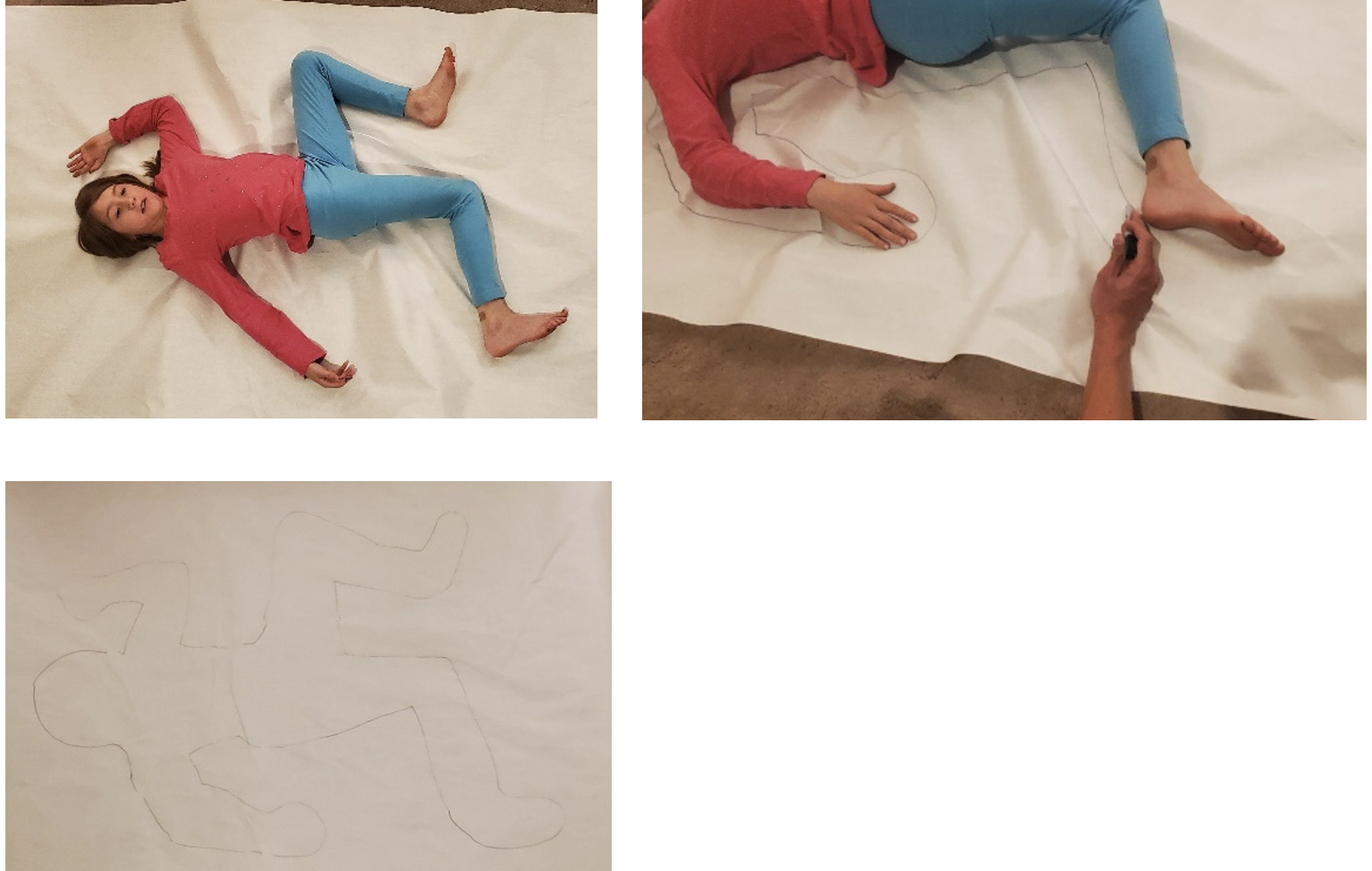
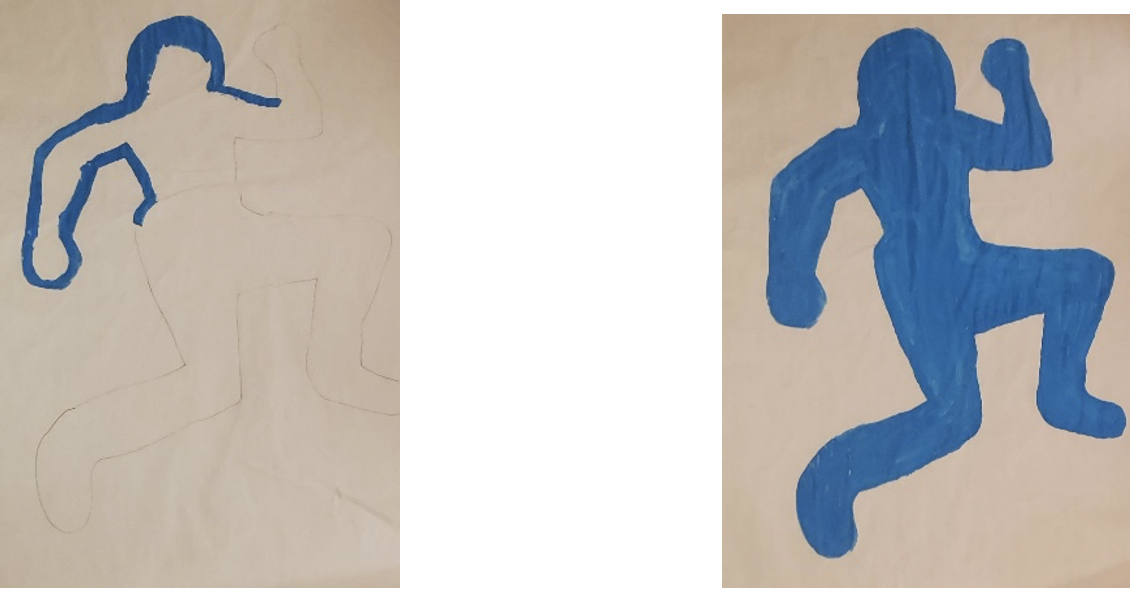
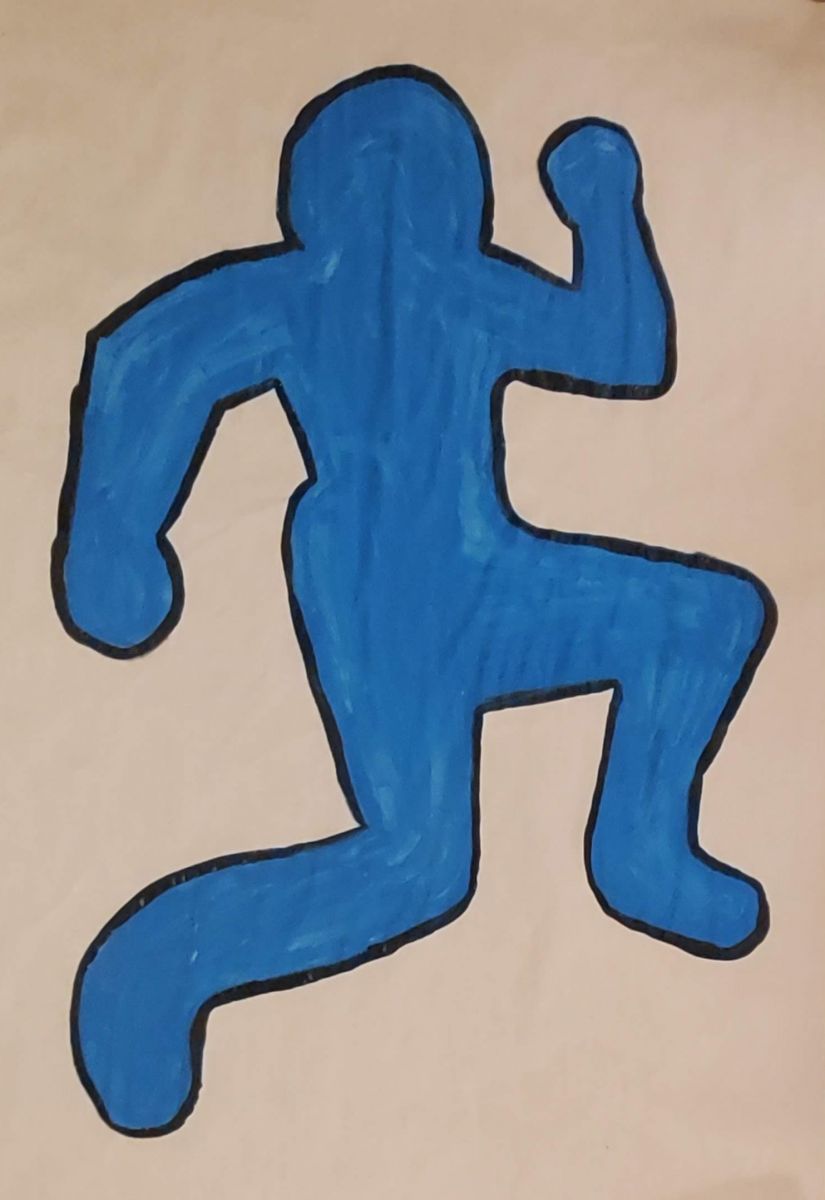
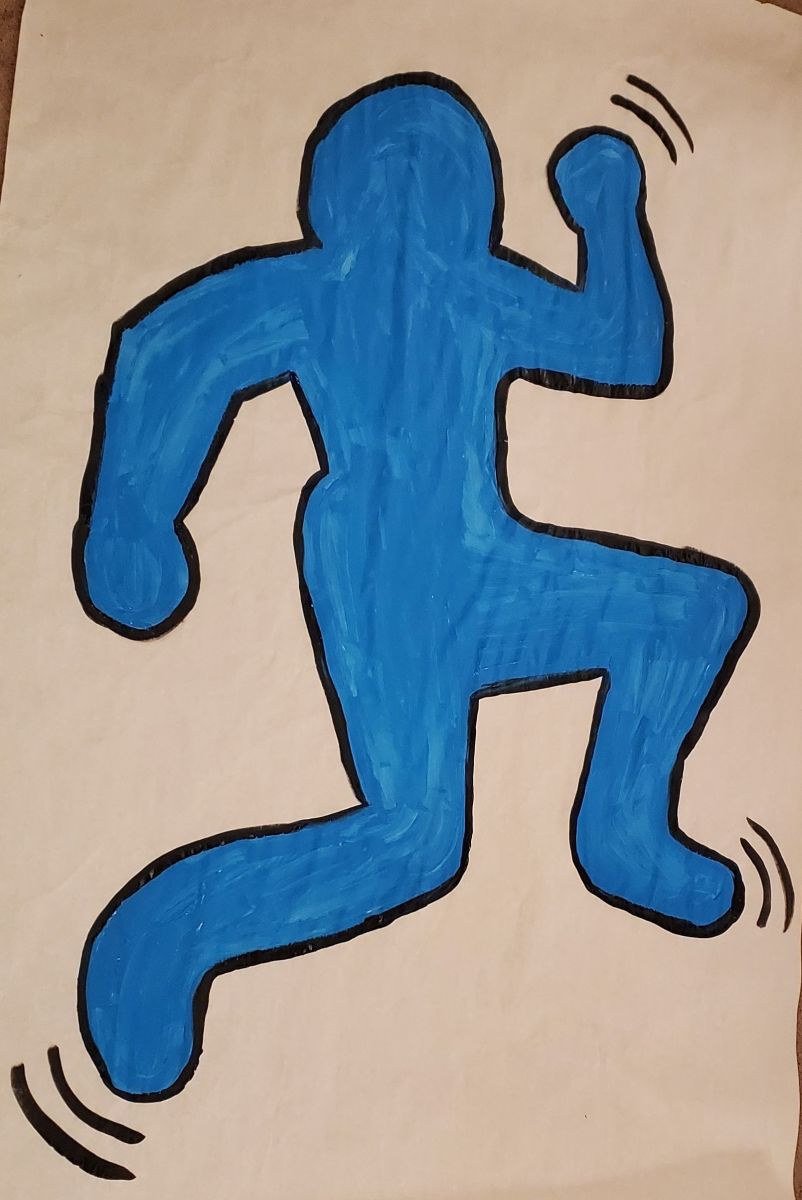
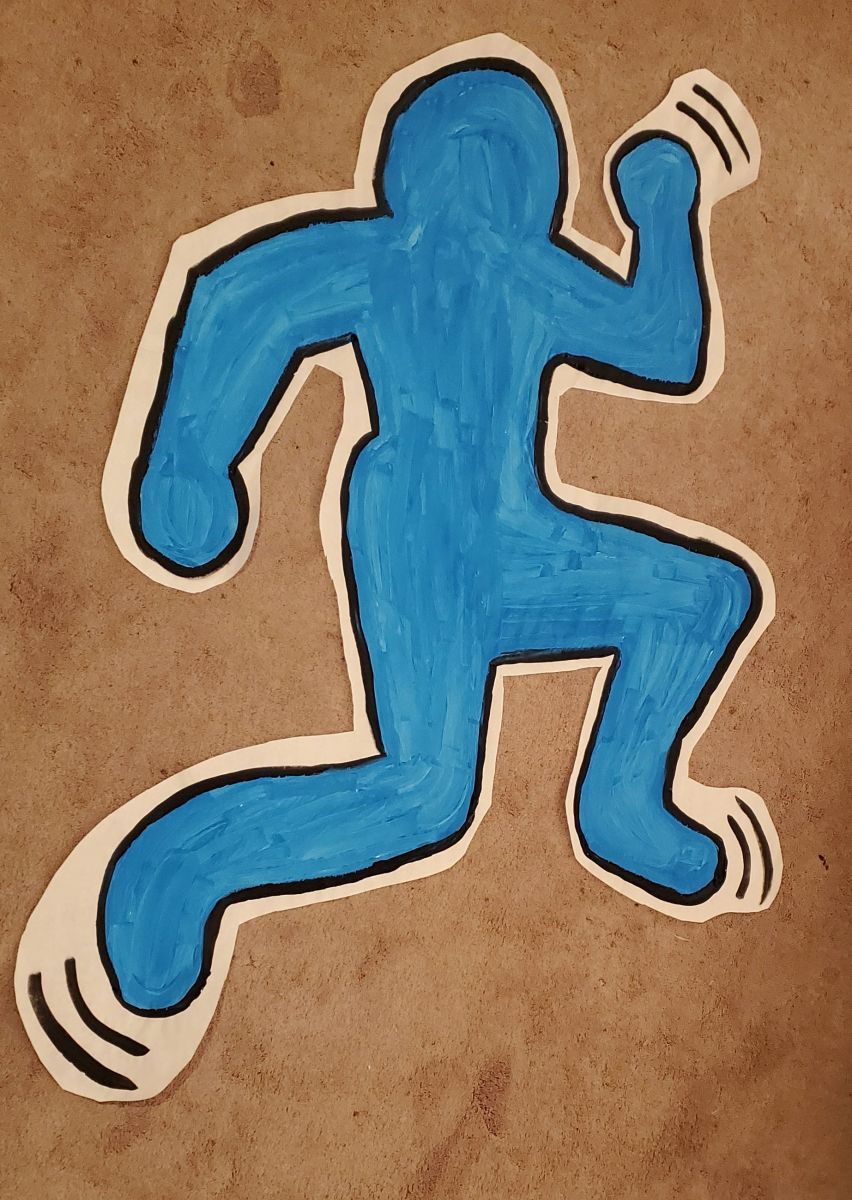


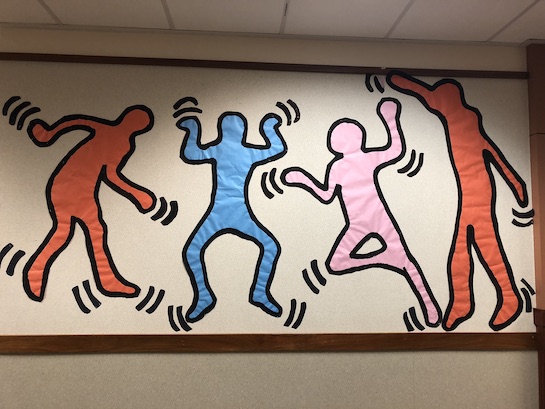
Lesson written by Juliette Ripley-Dunkelberger. Images from Issaquah Valley Elementary, 2016. Biography from HaringKids, Keith Haring Foundation. See also: In His Own Words. Beginnings | Keith Haring.
Haring, Kay. Keith Haring: The Boy Who Just Kept Drawing. Penguin Young Readers Group, 2017
21st Century Thinking Skills
Thinking flexibly, listening with empathy, taking responsible risks, goal setting, observing, making connections, visualizing, sequencing, comparing/contrasting, determining main idea, finding evidence, determining point of view, decision making, evaluating.
WA State Learning Standards
(VA:Cr1.2.3) a. Apply knowledge of available resources, tools, and technologies to investigate personal ideas through the artmaking process.
(VA:Cr2.1.3) a. Create personally satisfying artwork, using a variety of artistic processes and materials. This happens when students design their own figure and personal tag.
(VA:Cr2.2.3) a. Demonstrate an understanding of the safe and proficient use of materials, tools, and equipment for a variety of artistic processes.
(VA:Cr3.1.3) a. Elaborate visual information by adding details in an artwork to enhance emerging meaning. This happens when students use tags, similar lines as Haring.
(VA:Pr6.1.3) a. Identify and explain how and where different cultures record and illustrate stories and history of life through art. This happens when you discuss Haring’s place in American Pop Art.
(VA:Re7.1.3) a. Speculate about processes an artist uses to create a work of art. This happens if you talk about how Haring drew so large.
(VA:Re7.2.3) a. Determine messages communicated by an image.
(VA:Re8.1.3) a. Interpret art by analyzing use of media to create subject matter, characteristics of form, and mood. This happens when student understand why Haring chose drawing and painting to express his ideas.
(VA:Re9.1.3) a. Evaluate an artwork based on given criteria. This happens when you use a rubric of student performance.
(VA:Cn11.1.3) a. Recognize that responses to art change depending on knowledge of the time and place in which it was made. This happens if students understand that words, signs and symbols for the first time had a place in Pop Art.
Arts Integration Opportunities
Social studies: research current events, common public symbols. Opinion writing.
Please note: These lesson plans are intended for non-profit use only. Use of these plans for commercial purposes should give attribution to the Issaquah Schools Foundation and be accompanied by a nominal donation at www.isfdn.org/donate. Thank you.
Fueling Success for Every Student, Every School